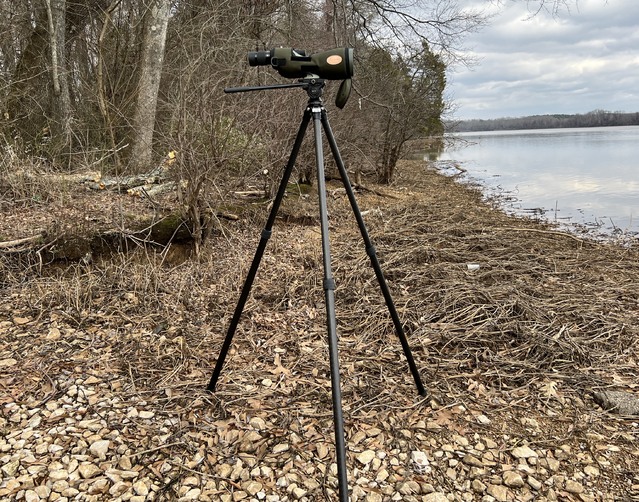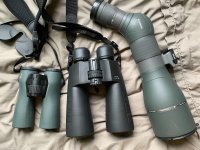I wonder, who has a 15x56 and skipped having a scope and is fully satisfied?
I bought a scope (ATC 17-40x56) and already knew: I am not really a spotting scope type. I don't like carrying too much stuff. I prefer watching with both eyes as well. Now I sometimes think: wouldn't a 15x56 be a better optiond for me? I know it is hard to hold it steady, but I think it would be easier holding it steady than the ATC. For longer views I can always use a tripod. I can also sit down and put my elbows on my knees ore lend my elbows on a fence or something. I think the 15x56 is better suitable as well, because of the bigger EP and the higher transmission.
I will lose magnification, that's right... but the idea of having the SLC 15x56 won't let me go. (I would prefer the SLC because of the ergonomics and the weight)
So, happy 15x56 users on this forum who do not miss a scope? Or users who have them both but use the 15x56 more?
I bought a scope (ATC 17-40x56) and already knew: I am not really a spotting scope type. I don't like carrying too much stuff. I prefer watching with both eyes as well. Now I sometimes think: wouldn't a 15x56 be a better optiond for me? I know it is hard to hold it steady, but I think it would be easier holding it steady than the ATC. For longer views I can always use a tripod. I can also sit down and put my elbows on my knees ore lend my elbows on a fence or something. I think the 15x56 is better suitable as well, because of the bigger EP and the higher transmission.
I will lose magnification, that's right... but the idea of having the SLC 15x56 won't let me go. (I would prefer the SLC because of the ergonomics and the weight)
So, happy 15x56 users on this forum who do not miss a scope? Or users who have them both but use the 15x56 more?










